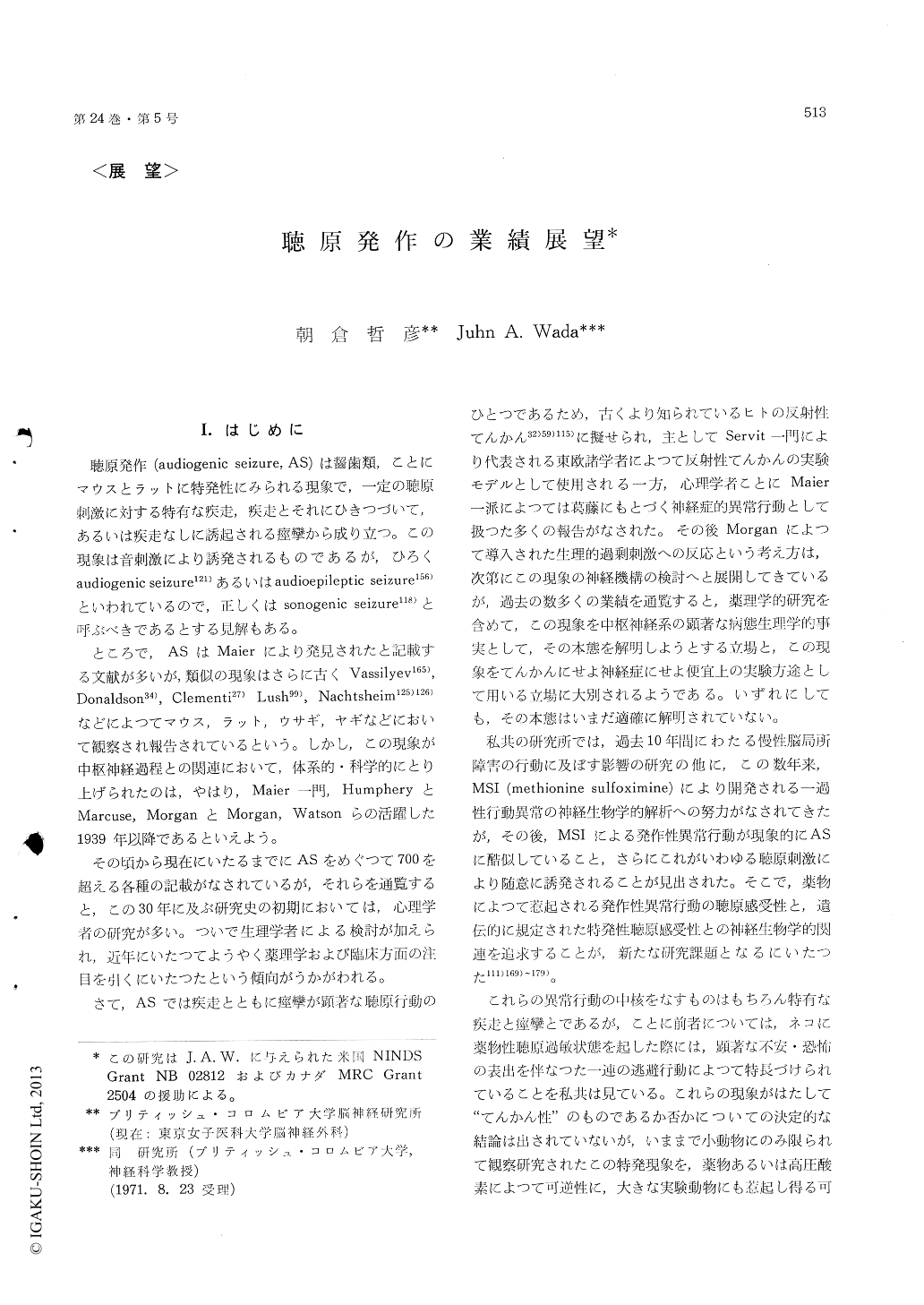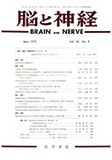Japanese
English
- 有料閲覧
- Abstract 文献概要
- 1ページ目 Look Inside
I.はじめに
聴原発作(audiogenic seizure, AS)は齧歯類,ことにマウスとラットに特発性にみられる現象で,一定の聴原刺激に対する特有な疾走,疾走とそれにひきつづいて,あるいは疾走なしに誘起される痙攣から成り立つ。この現象は音刺激により誘発されるものであるが,ひろくaudiogenic seizure121)あるいはaudioepileptic seizure156)といわれているので,正しくはsonogenic seizure118)と呼ぶべきであるとする見解もある。
ところで,ASはMaierにより発見されたと記載する文献が多いが,類似の現象はさらに古くVassilyev165)Donaldson34),Clementi27)Lush99),Nachtsheim125)126)などによつてマウス,ラット,ウサギ,ヤギなどにおして観察され報告されているという。しかし,この現象力中枢神経過程との関連において,体系的・科学的にとり上げられたのは,やはり,Maier一門, HumpheryとMarcuse, MorganとMorgan, Watsonらの活躍した1939年以降であるといえよう。
Audiogenic "seizure" is an episodic behavioral manifestation precipitated by auditory stimulus, most typically encompassing a period of frantic running which may or may not terminate in con-vulsive movement. This is known to be naturally present among some rodents such as mice, rats and rabbits. Over 700 references are available in the literature but precise nature and mechanism of this peculiar behavior have not been elucidated.
With an attempt to further clarify neurobiologi-cal basis of this unique phenomena, the authors reviewd significant past works with respect to complex intrinsic and extrinsic factors including genetic features modifying its susceptibility ; bothperipheral and central neural structures involved in translation of acoustic stimulus into an episodic behaviour ; associated pathophysiological alterations, biochemical derangements including biogenic amine metabolism.
Some account was also given, for the purpose of comparison, such as cats and monkeys by "audio-genic agents" (i. e. Methionine sulfoximine, thio-semicarbazide and hyperbaric oxygenation) which have been disclosed in the authors' laboratory.
The authors advocate the use of term audiogedic "reaction" to avoid conceptual confusion which can arise from the use of term audiogenic "seizure". There is very little doubt that the convulsive com-ponent of this reaction is of epileptic nature. How-ever, a considerable uncertainty exists as to the possible nature of its frantic running phase, i. e. episodic running behavior. Our own studies in-volving genetically sesceptible and audiogenic ag-ents treated animals suggest :
1) that the episodic running behavior is coincid-ent with diffuse electrographic arousal pattern without epileptiform discharge in any of the cortical and deep structures explored and
2) that this peculiar behavior may represent pathologically exaggerated manifestation of neural mechanisms integrated within the core of brain stem responsible for organizing an innate escape behavior.
Further consideration was given to the fact that natural or idiopathic audiogenic "seizure" suscepti-bility exists only among rodents while photogenic seizure sesceptibility appears to be the exclusive property of higher mammals such as baboon and man. It is suggested that future exploration of possible differential neurobiological significance of phono-v. s. photo-reception with respect of onto-and phylo-genesis, will contribvte for further clari-fication of some of the most intriguing questions posed by this sensory-precipitated peculiar episodic behavior.

Copyright © 1972, Igaku-Shoin Ltd. All rights reserved.


